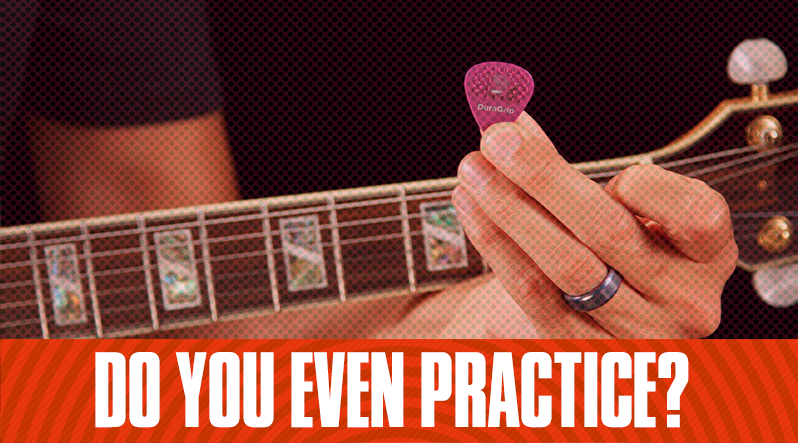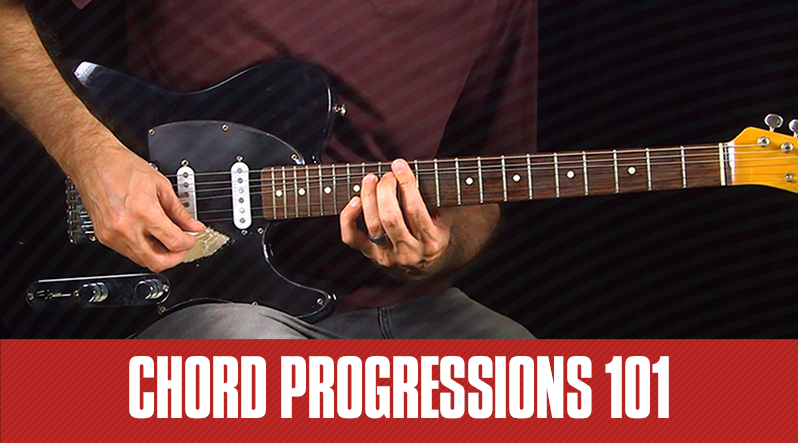Minor chord progressions are very similar to major chord progressions but of course, we’re looking at the minor scale.
It’s important to know how to find chords within a minor scale so that you have a number of options when it comes time to create your own song or if you simply want to know how your favorite hits have come together.
In this guitar lesson we will take a in-depth look at minor chords, how to build them and how to use them in chord progressions.
How to Find Chords in a Minor Key
In order to find the guitar chords within a minor scale, we’ll use the concept of Roman numerals and how they determine which chord is a major or minor in the relevant key.
The formula for finding chords in a minor key looks like this:
i - ii(dim) - III - iv - V - VI - VII
The lowercase numerals indicates a minor chord, while the capitalized numerals are major chords.
Please note: the second chord within this formula is a diminished chord.
Let’s take this formula and apply it to the key of A. Remember the A minor scale is made up of these notes:
A - B - C - D - E - F - G
If you need to pause and check out a scale finder, now would be a great time to do that.
Since we know that these are the notes of the A minor scale, we can take these notes and plug them into the chord qualities from before:
i - ii(dim) - III - iv - V - VI - VII
Am - Bdim - C - Dm - E - F - G
Here's another example - Let's try G.
First, let's figure out the G minor scale:
G - A - Bb - C - D - Eb - F
Now let's apply these scale degrees to our minor chord qualities:
i - ii(dim) - III - iv - V - VI - VII
Gm - Adim - Bb - Cm - D - Eb - F
It can be as simple as plug-and-play.
Just as long as you have a solid understanding of your minor scales.
But take your time with this, it won't come easy.
You might need to think your way through each chord progression, and that's totally alright!
Now that we know how to find chords in a minor key, let’s take a look at some really common minor chord progressions.
You'll probably recognize these progressions from some of your favorite songs.
3 Common Minor Chord Progressions
First up is the i - iv - V - i (1 - 4 - 5 - 1).
Remember, the roman numerals are the corresponding scale degrees in the key.
This progression makes up most blues and rock songs.
It's great because it outlines the entire tonality of the key in three chords - the 1 being the 'home/resolution,' the 5 being the 'away/question,' and the 4 being the path between the two.
Most other chord progressions can be related to this one foundationally.
Here we've outlined this classic progression in three different keys:
i - iv - V - i
A minor: Am - Dm - E - Am
D minor: Dm - Gm - A - Dm
Next up we have the i - VI - III - VII - i (1 - 6 - 3 - 7 - 1).
Another massively famous chord progression you need to know.
We've outlined how to play this progression in a few different keys:
i - VI - III - VII - i
C minor: Cm - A - E - B - A
E minor: Em - C - G - D - Em
A minor: Am - F - C - G - Am
The third progression we'll talk about today is a little more emotional - i - VII - iv - V - i (1 - 7 - 4 - 5 - 1).
If you are looking for something solumn, this is the progression for you.
Take a stab at these different keys and see how they make you feel:
i - VII - iv - V - i
D minor: Dm - Bb - Gm - C - Dm
G minor: Gm - Eb - Cm - F - Gm
B minor: Bm - G - Em - A - Bm
There you have it, a crash course into minor chords! Feel free to play around with them and have fun. ou never know what you might come up with.

